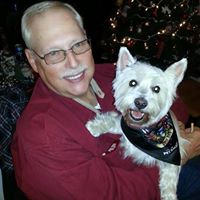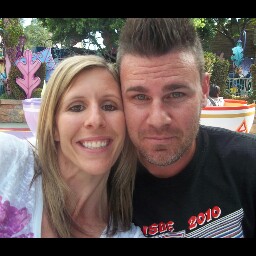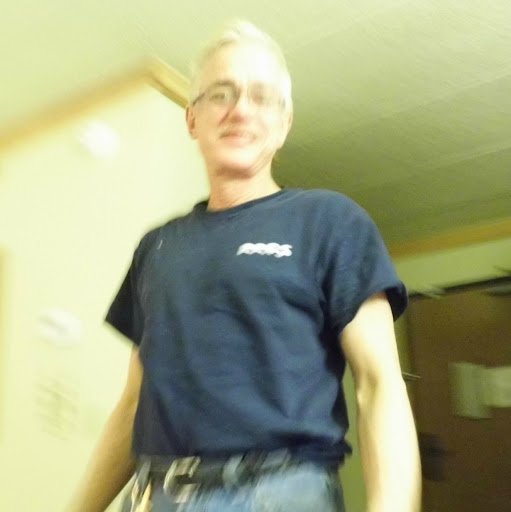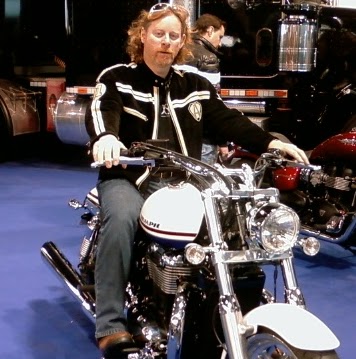Kevin G Goodman
age ~62
from Virginia Beach, VA
- Also known as:
-
- Kevin R Goodman
- Greg Goodman
- Kevin Moyers
Kevin Goodman Phones & Addresses
- Virginia Beach, VA
- 716 Nixon Dr, Suffolk, VA 23434 • (757)5389318 • (757)9233574
- Marietta, GA
- Ruther Glen, VA
- Fort Hood, TX
- Springfield, MO
- San Francisco, CA
- 925 Brook Ave APT 136, Suffolk, VA 23434 • (757)8091057
Name / Title
Company / Classification
Phones & Addresses
CEO
FSLOGIX, INC
Custom Computer Programing
Custom Computer Programing
3651 Peachtree Pkwy SUITE E #110, Suwanee, GA 30024
5700 Preserve Cir, Alpharetta, GA 30005
5700 Preserve Cir, Alpharetta, GA 30005
Us Patents
-
Systems And Methods For Avoiding Base Address Collisions Using Alternate Components
view source -
US Patent:7058775, Jun 6, 2006
-
Filed:Nov 21, 2003
-
Appl. No.:10/719781
-
Inventors:Kevin Goodman - Alpharetta GA, US
-
Assignee:RTO Sortware, Inc - Suwanee GA
-
International Classification:G06F 12/00
-
US Classification:711165, 719331
-
Abstract:Processes are monitored as components are loaded into memory. Relocation of a component to an alternate base address instead of its preferred base address, causes an alternate component to be created corresponding to the relocated component. The alternate component is a copy of the relocated component, but the preferred base address of the alternate component is reset to be the alternate base address of the relocated component. Additional alternate components may be created for each relocated component, with each additional alternate component being optimized in a different manner. Alternate components may be implemented as alternate data stream of the corresponding relocated components. In response to subsequent requests to load a selected component into memory, it is determined whether the selected component has at least one corresponding alternate component. If so, one of the corresponding alternate components is loaded into memory instead of the selected component.
-
Systems And Methods For Avoiding Base Address Collisions
view source -
US Patent:7461228, Dec 2, 2008
-
Filed:Mar 15, 2006
-
Appl. No.:11/376705
-
Inventors:Kevin Goodman - Alpharetta GA, US
-
Assignee:RTO Software, Inc. - Alpharetta GA
-
International Classification:G06F 12/00
-
US Classification:711165, 719331
-
Abstract:Processes are monitored as components are loaded into memory. Relocation of a component to an alternate base address instead of its preferred base address, causes an alternate component to be created corresponding to the relocated component. The alternate component is a copy of the relocated component, but the preferred base address of the alternate component is reset to be the alternate base address of the relocated component. Additional alternate components may be created for each relocated component, with each additional alternate component being optimized in a different manner. Alternate components may be implemented as alternate data stream of the corresponding relocated components. In response to subsequent requests to load a selected component into memory, it is determined whether the selected component has at least one corresponding alternate component. If so, one of the corresponding alternate components is loaded into memory instead of the selected component.
-
System And Methods For Avoiding Base Address Collisions
view source -
US Patent:7694098, Apr 6, 2010
-
Filed:Sep 9, 2008
-
Appl. No.:12/206780
-
Inventors:Kevin J. Goodman - Alpharetta GA, US
-
Assignee:RTO Software, Inc. - Alpharetta GA
-
International Classification:G06F 12/00
-
US Classification:711165
-
Abstract:Processes are monitored as components are loaded into memory. Relocation of a component to an alternate base address instead of its preferred base address, causes an alternate component to be created corresponding to the relocated component. The alternate component is a copy of the relocated component, but the preferred base address of the alternate component is reset to be the alternate base address of the relocated component. Additional alternate components may be created for each relocated component, with each additional alternate component being optimized in a different manner. Alternate components may be implemented as alternate data stream of the corresponding relocated components. In response to subsequent requests to load a selected component into memory, it is determined whether the selected component has at least one corresponding alternate component. If so, one of the corresponding alternate components is loaded into memory instead of the selected component.
-
Dynamically Setting The Optimal Base Addresses Of Process Components
view source -
US Patent:20020124150, Sep 5, 2002
-
Filed:Jan 31, 2002
-
Appl. No.:10/062619
-
Inventors:Kevin Goodman - Alpharetta GA, US
-
International Classification:G06F012/00
-
US Classification:711/202000, 711/170000, 709/328000
-
Abstract:Processes are monitored to determine if all of their components are loaded from persistent storage into memory at their preferred base addresses. Each of the components is examined to determine if that component's in-memory base address matches the preferred base address of its on-disk representation. If a base address collision is detected, the on-disk representation of the preferred base address is updated to reflect the new in-memory base address.
-
Delay-Load Optimizer
view source -
US Patent:20080163185, Jul 3, 2008
-
Filed:Dec 29, 2006
-
Appl. No.:11/647675
-
Inventors:Kevin Goodman - Alpharetta GA, US
-
Assignee:RTO Software, Inc. - Alpharetta GA
-
International Classification:G06F 9/45
-
US Classification:717151
-
Abstract:An application program includes an executable file and at least one other component (e.g. a DLL). A copy of the executable file is created and its import address table is modified by replacing a reference to the component with a reference to a delay-load component and replacing a reference to an imported function included within the component with a reference to a delay-load function included within the delay-load component. The delay-load function is designed to load the component into memory upon execution of a function call designed to access the imported function. The copy of the executable file may be saved as an alternate data stream of the original executable file. The copy of the executable file may be loaded into memory in response to a command for initializing the application program. As a result, the delay-load component will be loaded into memory instead of the component.
-
Systems And Methods For Accessing Remote Files
view source -
US Patent:20200319903, Oct 8, 2020
-
Filed:May 24, 2017
-
Appl. No.:16/303583
-
Inventors:- Suwanee GA, US
Kevin GOODMAN - Suwanee GA, US -
International Classification:G06F 9/455
G06F 9/451
G06F 9/54
G06F 16/188
G06F 16/13 -
Abstract:The present systems and methods generally relate to the elimination or reduction of network traffic required to support operations on a file of any size stored remotely on a file server or network share. More particularly, the present systems and methods relate to encapsulation of a remote file in such a way that the file appears to the local operating system and any local applications to be residing locally, thus overcoming some of the performance issues associated with multiple users accessing a single network share (e.g., CIF S share) and/or a single user remotely accessing a large file.
-
Remote Application Access In A Virtual Desktop Infrastructure Environment
view source -
US Patent:20190370034, Dec 5, 2019
-
Filed:May 30, 2019
-
Appl. No.:16/426753
-
Inventors:- Suwanee GA, US
Kevin GOODMAN - Alpharetta GA, US -
International Classification:G06F 9/451
G06F 9/455
G06F 16/188 -
Abstract:Technologies are disclosed for providing remote application access in a virtual desktop infrastructure (“VDI”) environment. Application and OS files may be encapsulated in VHDs in such a way that the files appear to an OS and applications to be stored on a local mass storage device. A filter driver may monitor registry activity, detect I/O requests or instructions directed to paths at a local computing system, and redirect the detected I/O requests or instructions to an attached VHD. This allows for a computing system to access an application encapsulated within a remote VHD as if the application was stored locally. In this way, the computing device may access and use applications in a virtual computing environment without the need to package/sequence the applications.
-
Redirection Of I/O Requests From Local To Remote Storage Locations To Improve Network Performance And Data Redundancy
view source -
US Patent:20190339907, Nov 7, 2019
-
Filed:Apr 30, 2019
-
Appl. No.:16/399573
-
Inventors:- Redmond WA, US
Kevin John GOODMAN - Alpharetta GA, US -
International Classification:G06F 3/06
G06F 16/182
H04L 29/08 -
Abstract:Technologies are disclosed for redirecting input/output (“I/O”) requests to virtual hard disks (“VHDs”) to improve network performance and data redundancy. More particularly, files can be encapsulated in remote VHDs and accessed in such a way that the files appear to a local operating system and any local applications to be residing locally. Furthermore, I/O requests redirected to files encapsulated in VHDs may also be redirected to one or more additional VHDs for data redundancy. The redirected I/O requests may be transmitted simultaneously but separately to the additional VHDs in a split stream.
Lawyers & Attorneys

Kevin Goodman - Lawyer
view sourceISLN:
906989997
Admitted:
1985
University:
Purdue University, B.S., 1982
Law School:
Indiana University School of Law, J.D., 1985

Kevin Goodman - Lawyer
view sourceSpecialties:
General Civil and Trial Practice
Personal Injury Law
Wrongful Death Law
Defective Products Law
Medical Malpractice
Business Law
Real Estate Law
Discrimination Law
Harassment Law
Employment Litigation
International Business Transactions
Estate Planning Law
Adoption Law
Family Law
Bankruptcy Law
Personal Injury Law
Wrongful Death Law
Defective Products Law
Medical Malpractice
Business Law
Real Estate Law
Discrimination Law
Harassment Law
Employment Litigation
International Business Transactions
Estate Planning Law
Adoption Law
Family Law
Bankruptcy Law
ISLN:
906990009
Admitted:
1989
University:
University of Utah, B.A., 1985
Law School:
McGeorge School of Law, University of the Pacific, J.D., 1988

Kevin Goodman - Lawyer
view sourceOffice:
Rankin, Hill & Clark LLP
Specialties:
Patent
Trademark and Copyright
Intellectual Prop.
Intellectual Property
Trademark and Copyright
Intellectual Prop.
Intellectual Property
ISLN:
918933094
Admitted:
2005
University:
Youngstown State University, B.E., 2000; Youngstown State University, B.E., 2000
Law School:
Cleveland Marshall College of Law, J.D., 2005

Kevin Goodman - Lawyer
view sourceISLN:
914545901
Admitted:
1996
University:
Hofstra University, B.S., 1987
Law School:
St. John's University, J.D., 1995
Resumes

Kevin J Goodman
view source
Kevin Goodman
view source
Kevin Goodman
view source
Kevin Goodman
view source
Kevin Goodman
view source
Kevin Goodman
view source
Goodman Kevin
view source
Kevin Goodman
view source
Kevin P. Goodman
view source
Kevin Goodman Sr.
view source
Kevin Goodman
view source
Kevin Goodman
view source
Kevin Goodman
view source
Kevin Goodman
view sourcePlaxo

Kevin Goodman
view sourceCentury 21 Judge Fite Company I strive to serve my clients and provide honest, professional service to all I have contact with.

kevin goodman
view sourceSenior karate Instructor at GIFT Martial Arts UK L...

Kevin Goodman
view sourceBadger Utility
Classmates

Kevin Goodman
view sourceSchools:
Mid-Carolina High School Prosperity SC 1985-1989
Community:
George Smith, Susan Dawkins, Marlena Williams, Connie Harmon

Kevin Goodman
view sourceSchools:
Edisto High School Cordova SC 1989-1993
Community:
Bill Clements, Thero Jennings

Kevin Goodman (Consoni)
view sourceSchools:
Foothills Elementary School Glendale AZ 1990-1995
Community:
Juanita Paro, Myles Hutchison

Kevin Goodman
view sourceSchools:
Maytown High School Langley KY 1972-1972, Maytown Elementary School Langley KY 1985-1994
Community:
Clara Hughes, Mary Watkins

Kevin Goodman
view sourceSchools:
Buena Vista High School Corona CA 2002-2006
Community:
Kathleen Bridges

Kevin Goodman
view sourceSchools:
Romulus Central High School Romulus NY 1975-1979
Community:
A Harvey, Valerie Kuleszo, Lisa Gable

Kevin Goodman (Soll)
view sourceSchools:
Basic Elementry School Henderson NV 1966-1972, Gordon McCaw Elementary School Henderson NV 1966-1972
Community:
Jeffrey Elliott

Kevin Manager (Goodman)
view sourceSchools:
Kennedy High School Suffolk VA 1977-1981
Community:
Regina Jeanie, Ronald Holliman, Carol Edwards
News

Data centers mushroom around Cleveland to take advantage of cheap power
view source- "It's an infrastructure legacy,'' said Kevin Goodman, managing director and a partner in BlueBridge Networks, which has a downtown data center near Playhouse Square and a larger facility in suburban Mayfield Heights.
- Date: Aug 31, 2014
- Category: Sci/Tech
- Source: Google
Flickr
Googleplus

Kevin Goodman

Kevin Goodman
Tagline:
Hi, I'm Kevin.

Kevin Goodman

Kevin Goodman

Kevin Goodman

Kevin Goodman

Kevin Goodman

Kevin Goodman
Youtube
Myspace
Get Report for Kevin G Goodman from Virginia Beach, VA, age ~62



















